MARIANI’S
Virtual Gourmet
JULY
10, 2016
NEWSLETTER

"Barbecue" by Gil Elvgren (1948)
IN THIS ISSUE
TWO GREAT RESTAURANTS IN ROME
By John Mariani
NEW YORK CORNER
ROSEMARY AND VINE
By John Mariani
NOTES FROM THE WINE CELLAR
GAMBLE FAMILY WINERY
By John Mariani
❖❖❖
ROME'S TWO GREATEST RESTAURANTS
By John Mariani
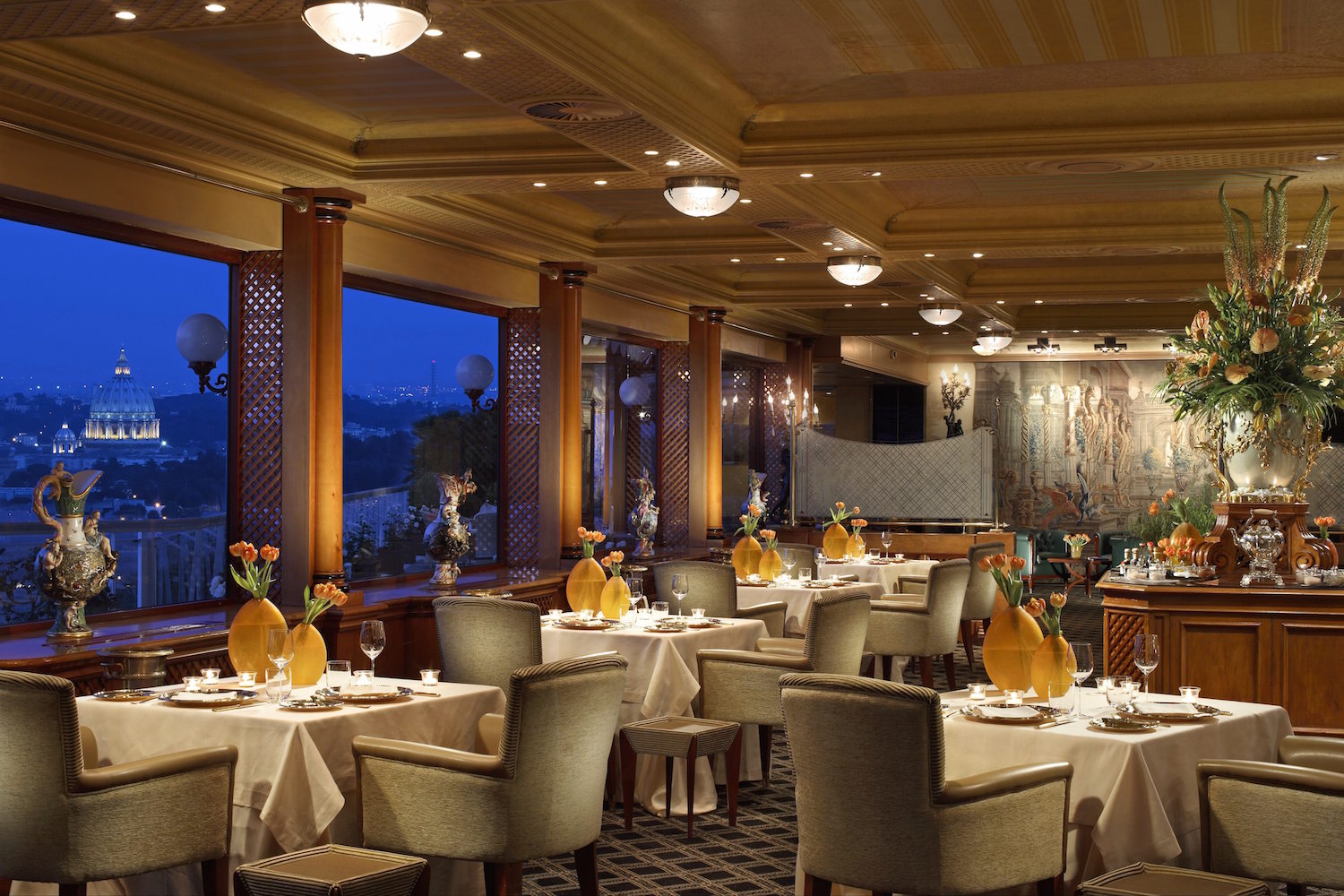
LA PERGOLA
It would be stretching the truth to say that Rome has an array of high-end, posh ristoranti serving cuisine of a kind that French Michelin Guide inspectors go ga-ga about. In fact, almost no one ever asks me recommendations for such restaurants, preferring instead to know what the best trattorias are in various parts of the city. Of those I shall be writing about soon, but for now let me report on two ristoranti—both perched high above the Eternal City—with the kind of style and service that matches the superb food prepared by highly imaginative chefs whose work is like none others’ in Rome, in Italy, or in the rest of the world for that matter.
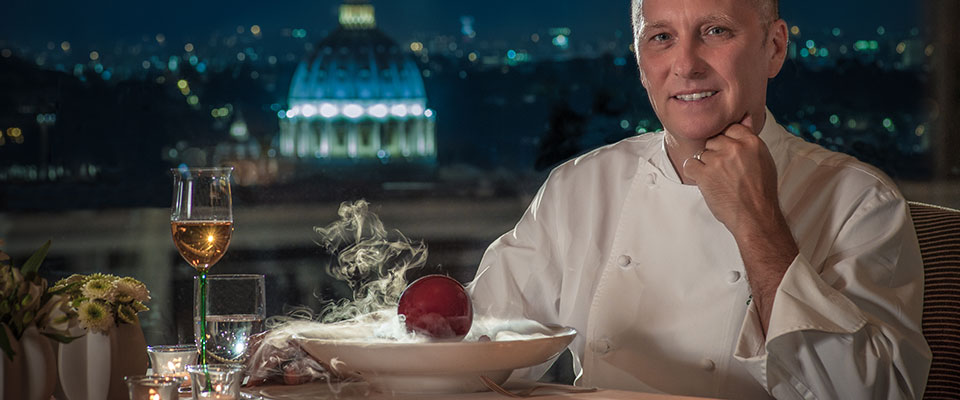 LA PERGOLA
LA PERGOLA
Rome Cavalieri Hotel
Via Alberto Cadlolo 101
011-39-06-3509-1
Romecavalieri.com
Sprawling across the broad terrace
floor of the Rome Cavalieri Hotel (about which I
wrote recently), La Pergola is easily one of the
most romantic restaurants in the world, purposely
lighted that way and configured so that simply
walking through it puts you in mind of all the
sweeping American-in-Rome movies of the
1950s—“Three Coins in the Fountain,” “A Light in
the Piazza ” (right),
“Roman Adventure,” “Roman Holiday”--as well as
Fellini’s  “La Dolce
Vita.”
“La Dolce
Vita.”
You
wind your way through La Pergola, immediately
stunned by the view, with Michelangelo’s dome of
St. Peter’s Basilica shining white in the
distance, and you notice the impeccably set tables
are wide and well-spaced from one another; the
handsomely dressed captains and waiters part the
way as you walk toward your table (all have a
grand view of Rome), and may point out the artwork
that includes a
rare Aubusson tapestry, Sèvres porcelain, an 18th
Century bronze candelabra, imperial furniture and
a fine collection of hand-blown glass by Emile
Gallé. Each
day a florist makes his own art set into a 17th
Century Celadron vase. Plates
and silverware are vermeil-gilded.
You are presented with warm
breads that include the best focaccia you’ll
ever taste as you peruse a wine list of
astonishing breadth and depth—3,500 labels 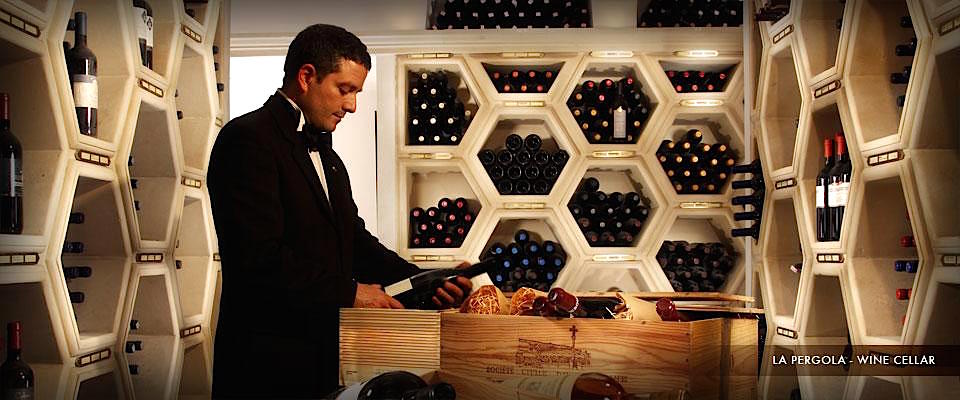 and 60,000 bottles, not
only Italian wines but bottles from all over the
world, all under the eagle eye of Marco Reitano,
who has been awarded the title of “Greatest
Sommelier in Italy.” (Ask the maître d’ if you
might visit the beehive-like cellar.) There is
also a list of 29 types of regional bottled
waters, even a selection of sea salts.
and 60,000 bottles, not
only Italian wines but bottles from all over the
world, all under the eagle eye of Marco Reitano,
who has been awarded the title of “Greatest
Sommelier in Italy.” (Ask the maître d’ if you
might visit the beehive-like cellar.) There is
also a list of 29 types of regional bottled
waters, even a selection of sea salts.
Executive
Chef Heinz Beck (above),
who has been here since 1994 and who has, in fact,
held three Michelin stars for years, is German,
married to a Roman, and he combines his love of
global cuisine with his passion for Italian. There
are some modernist tricks up his sleeve and a nod
towards the molecular, as evidenced by the number
of well-out-of-the-ordinary kitchen appliances,
like a unit that keeps different bread doughs at
different, ideal temperatures before baking.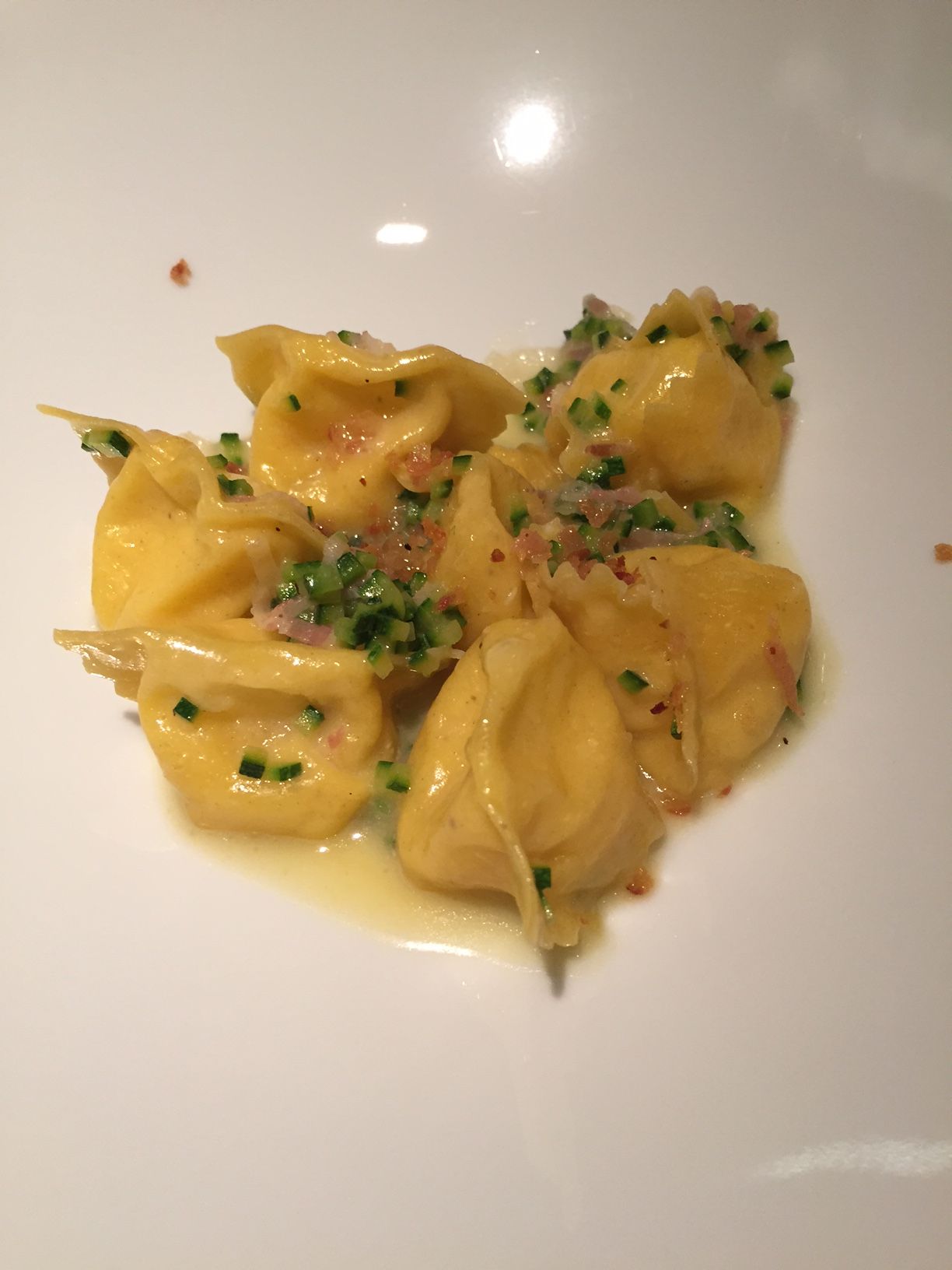
His cooking always shows whimsy
but is always backed by good taste. Every dish
that comes to the table is the result of intense
experimentation resolved only when perfected. There
are eccentricities, like making a powder from foie
gras and crafting a dish called “Hole 18” to look
like a golf course (below). But
what sounds odd becomes a revelation, like his cod
on kidney beans with iced parsley snow; the idea
of a “Composition” of John Dory, squid and prawns
treated to a citrus fruit steam adds amazing
flavors, each morsel of seafood individually
cooked till tender.
More traditional dishes, like
rabbit tortellini
(right)
with an essence of peas and broad beans, outshine
similar dishes anywhere else, as does the classic,
very simple spaghetti cacio e pepe,
commonly made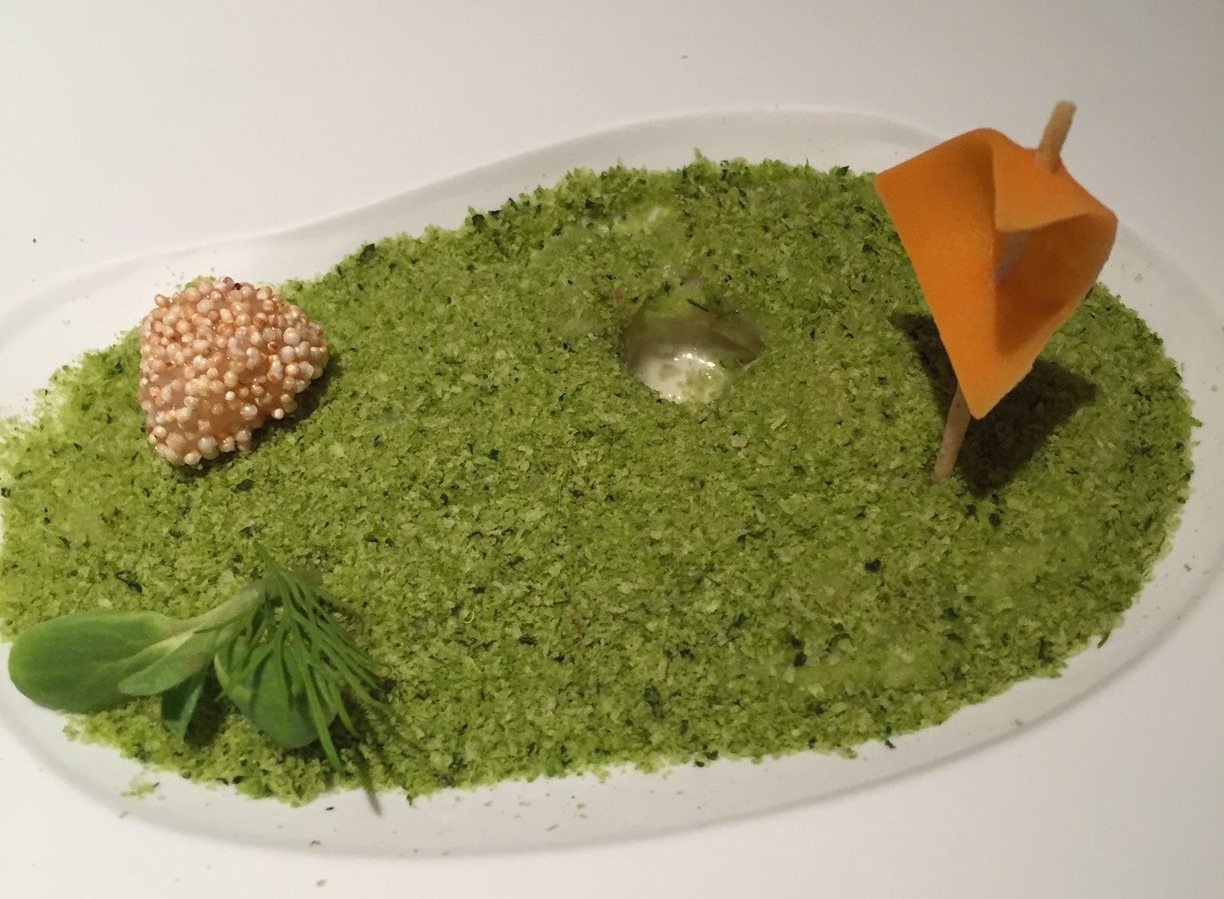 with nothing more than
cheese and pepper, which here takes on briny
nuance from the addition of lime-marinated white
shrimp. A
Mediterranean-inflected loin of lamb is crusted
with fennel in a cereal crust, with goat’s cheese
pearls. Desserts, as you might imagine, are final
flourishes like cannelloni filled with salty pine
nuts and Chantilly cream.
with nothing more than
cheese and pepper, which here takes on briny
nuance from the addition of lime-marinated white
shrimp. A
Mediterranean-inflected loin of lamb is crusted
with fennel in a cereal crust, with goat’s cheese
pearls. Desserts, as you might imagine, are final
flourishes like cannelloni filled with salty pine
nuts and Chantilly cream.
Clearly,
anyone seeking the pleasures of Roman food is
likely to find Beck’s cuisine idiosyncratic, even
strange. But
as you linger over coffee (dozens of varieties
offered) and bon bons brought to you in a Sterling
silver chest of drawers, finding yourself
satisfied but not sated, you’ll look out again at
the blue-black night sky of Rome and you’ll know
just how unique your entire evening has been.
La
Pergola offers a 10-course tasting menu at 230
euros, as well as à la carte. Dinner only.
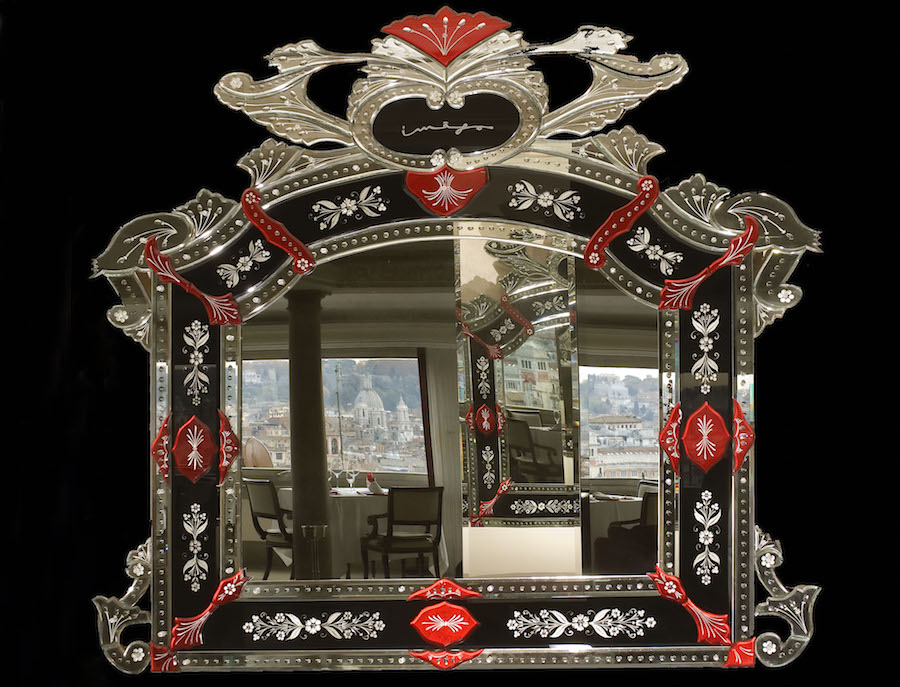 IMÀGO
IMÀGO
The Hassler Hotel
Piazza Trinità dei Monti, 6
+39 06 699340
Hotelhasslerroma.com
You come off the elevator, see
the glassed-in terrace across the room, with its
inlaid marble floors, Doric columns, soft ceiling
lights, antique vases, upholstered armchairs,
tables topped with thick white linens and red
roses or tulips, exquisite silverware and china,
and in the center an effusion of flowers. Soft
music sets a mood but never intrudes.
Naples-born Head Chef Francesco
Apreda creates menus in constant evolution—he’s
held a Michelin star since 2009—grounded in Roman
cuisine but boldly married to Asian flavors and
cooking techniques, like octopus and seaweed with
a spice he calls “uma-mia”—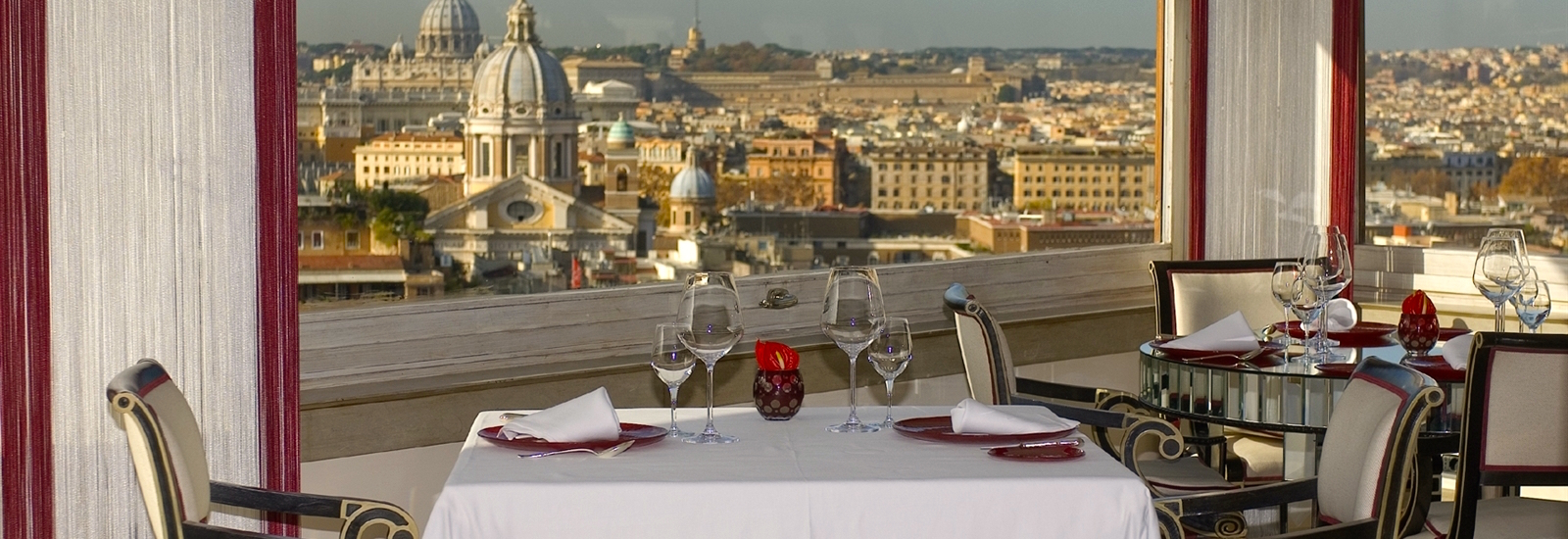 an Italian pun on the
vague idea of umami.
an Italian pun on the
vague idea of umami.
The
Hassler’s owner, Roberto Wirth, consulted on the
Imperial Hotel Italian restaurant, Cicerone, in
Tokyo, sending Apreda to work there before
bringing him back to take over as Imàgo’s chef,
and his fascination with Asian overtures returned
with him. Thus,
even a classic Roman dish of penne
all’arrabiata is melded with a Mumbai blend
of spices. Soy
vermicelli are graced with an amberjack sauce,
while silky black cod is glazed with sake and
served with purple vegetables. Tandoori-roasted duck
breast comes dusted with cocoa powder, 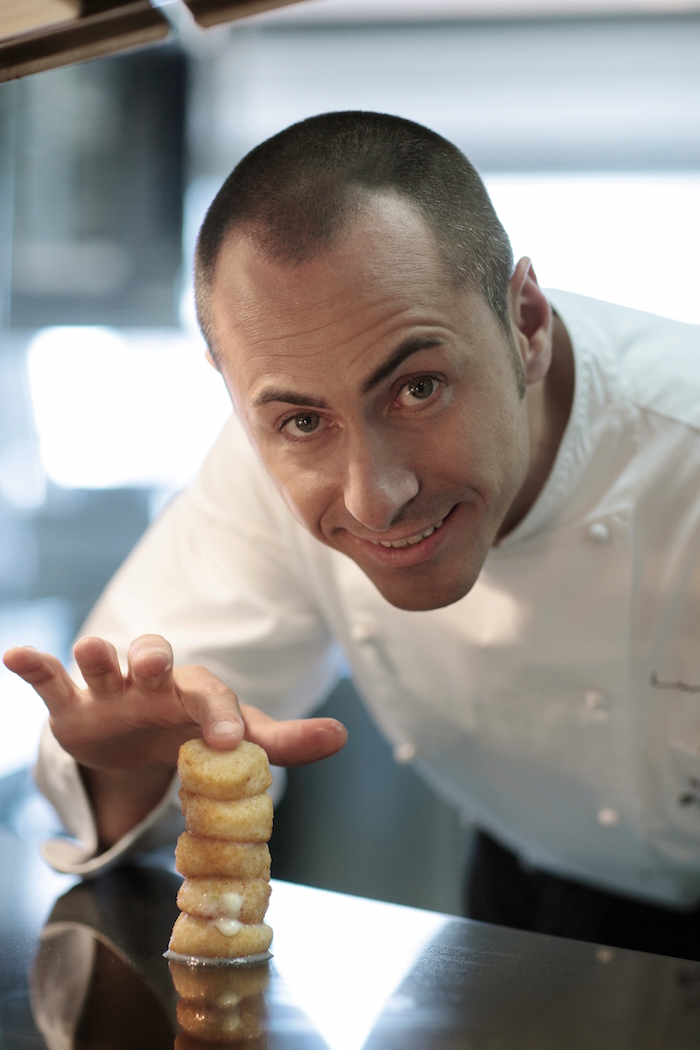 while
rigatoni pasta adds shiso to
a traditional pesto, as
well as bacon and pecorino cheese mimicking a
Roman carbonara. With a tip of
his toque to London, foie gras
comes with English scones and "sweet rain" (below).
while
rigatoni pasta adds shiso to
a traditional pesto, as
well as bacon and pecorino cheese mimicking a
Roman carbonara. With a tip of
his toque to London, foie gras
comes with English scones and "sweet rain" (below).
Given his birthplace,
Apreda can be expected to revel in food from his
home town but always with a twist, as in a
Neapolitan sfogliatella
“Samosa” style, green tea ice cream. He even
evokes a New York cheesecake, with a “Big Apple”
sour blend.
There is also a difficult-to-resist
selection of two dozen cheeses.
Imàgo’s wine list is one of the
finest in Rome, running to 51 pages and 1,100
labels, with 21 spumanti, dozens of Champagnes, a
daunting array of the best Italian white wines,
six vintages of Sassicaia, scores of Barbarescos
and Barolos, and a good selection from the nearby
Lazio vineyard.
You may have a pairing of six glasses with
your dinner, arranged by sommelier Alessandro
Crognale.
Like his
colleague Heinz Beck, Apreda is not making a
cuisine intended for 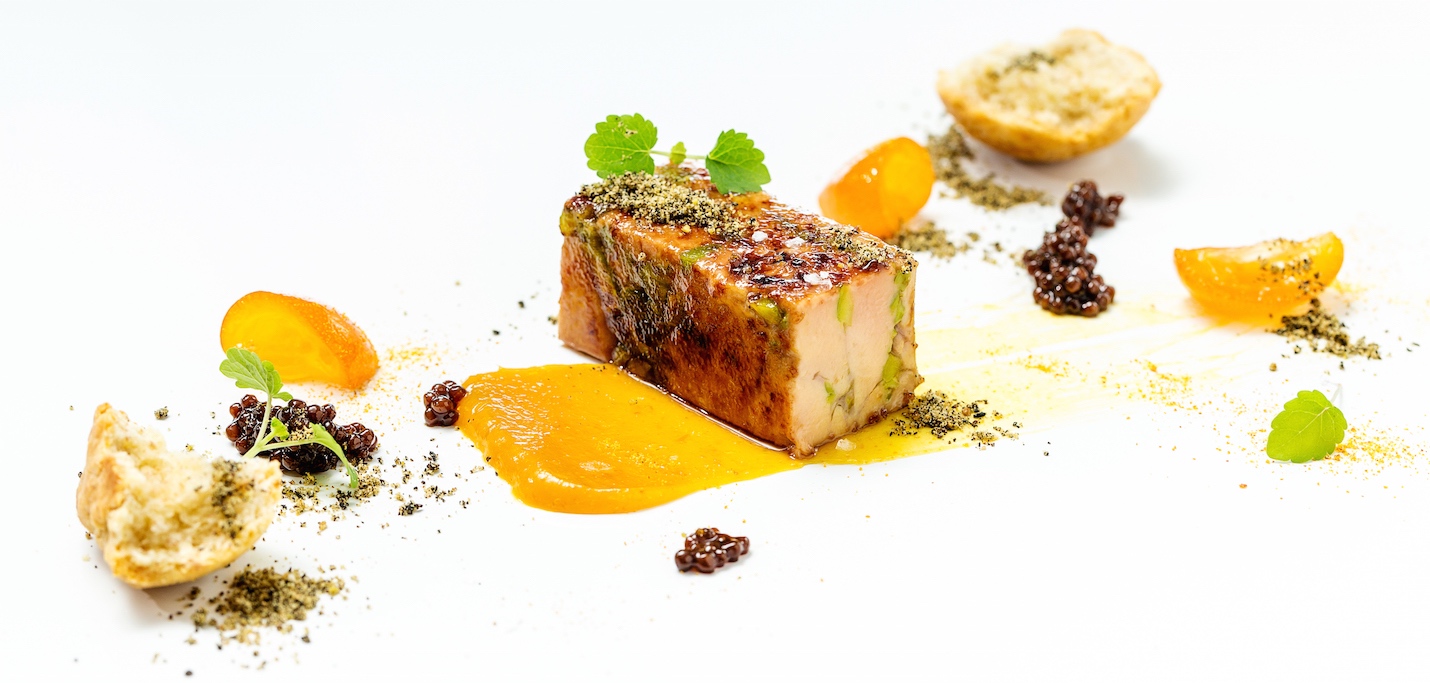 the
traveler who is merely interested in Rome’s
traditional culinary culture. You
have to open your mind to the way his works in an
international style full of color, texture,
contrasts and provocations, without straying over
the line into fluttering sensationalism.
the
traveler who is merely interested in Rome’s
traditional culinary culture. You
have to open your mind to the way his works in an
international style full of color, texture,
contrasts and provocations, without straying over
the line into fluttering sensationalism.
Imàgo, in Italian, does not
just mean “image.” It is more poetical, with
connotations of singularity, and a reflection of
all The Hassler and this extraordinary restaurant
stand for in every detail.
Imàgo offers two tasting menus at
130 euros and 150 euros and a vegetarian menu at
120 euros.
Dinner only.
❖❖❖
By John Mariani
By John Mariani
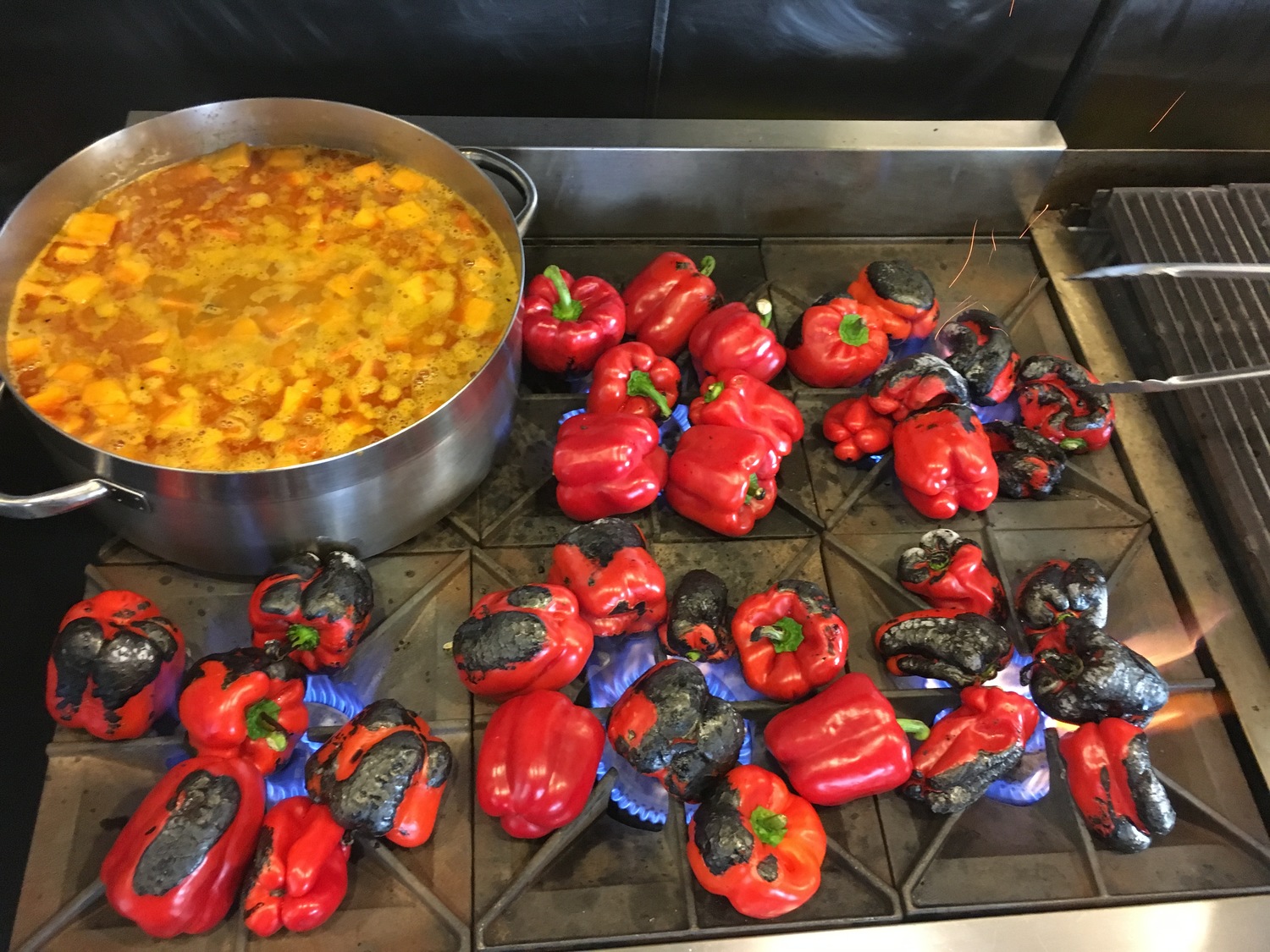
I had only the slightest
reluctance about going to Rosemary and Vine, a
charming new Mediterranean vegetarian restaurant
in Rye, N.Y., but was immediately won over by the
tantalizing items on the menu: gazpacho blanco, babaganoush,
truffled fettuccine, and a great deal more I was
ravenous to try.
My hesitancy was based on visits over the
years to vegetarian restaurants where the owners’
philosophy was writ large and the food just wasn’t
particularly tasty. (For my own philosophical
reasons, which include disregarding ferocious,
often vicious polemics, I avoid vegan restaurants
entirely.)
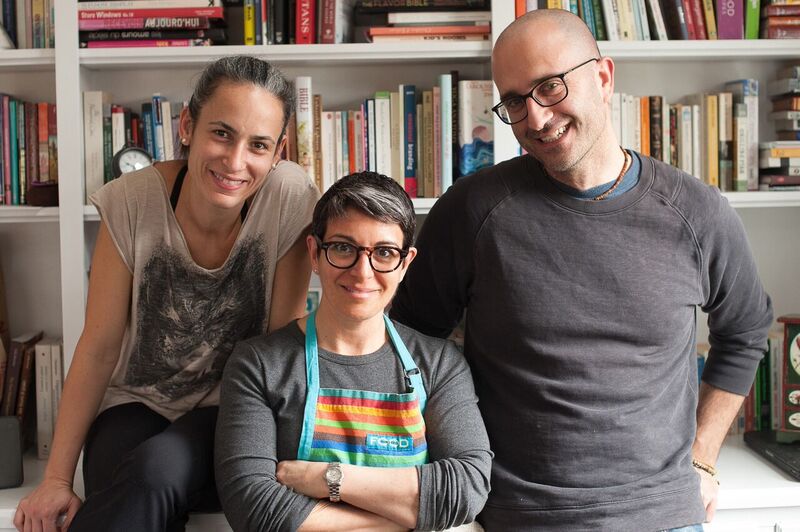 What is
proudly proclaimed on a sign over the kitchen at
Rosemary and Vine is that everything you will eat
is made fresh, (exceptions are the thin, crispy
Lebanese pita breads and the pastas), which is
immediately evident when you taste the food of
Consulting Chef Erica Wides as conceived by
Lebanese-born proprietors Tania Rahal and Berj Yeretzian.
He had left
investment banking, of which the world needs less,
to open his dream Mediterranean restaurant, which
we need many more of; she was in event planning,
so it was a natural leap.
What is
proudly proclaimed on a sign over the kitchen at
Rosemary and Vine is that everything you will eat
is made fresh, (exceptions are the thin, crispy
Lebanese pita breads and the pastas), which is
immediately evident when you taste the food of
Consulting Chef Erica Wides as conceived by
Lebanese-born proprietors Tania Rahal and Berj Yeretzian.
He had left
investment banking, of which the world needs less,
to open his dream Mediterranean restaurant, which
we need many more of; she was in event planning,
so it was a natural leap.
Both wanted to be rigorously
true to their Mediterranean roots, and, after some
tweaking in response to locals’ requests, the menu
is now a panoply of well-known favorites and new
dishes to be found only here. With nothing on the
menu more than $22, you’re likely to share
everything and take something home, as I certainly
did with the potato kibbeh
and bulgur layered with sautéed turmeric onions,
toasted pinenuts and sauce with greens ($18).
The space is a sun-lit shingled
storefront with tall windows on the street and a
couple of tables outside; the interior is bright
with colors of cream contrasted with barn wood,
brick and blackboards, with black and white tile
floors beneath a pressed tin ceiling. There
is a communal table and an open kitchen that has a
small counter bar holding the restaurant’s
well-chosen wines, all of them available by the
glass or bottle, stressing small batch
Mediterranean wineries.
It would be good form to use
cloth rather than flimsy paper napkins.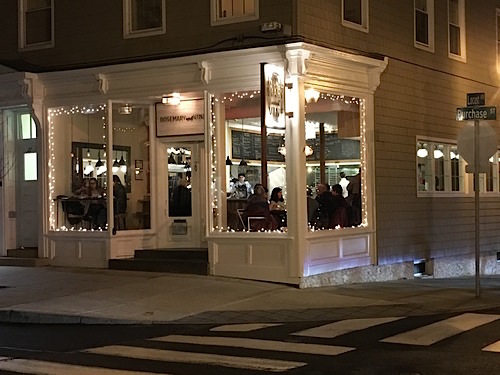
The problem for a carnivore at
Rosemary and Vine is not finding
something you want to eat but trying to decide
among so many delectable options. The use
of nuts and spices, creaminess and cheese, crusts
and other textures add measurably to the enjoyment
of foods that might otherwise be one-dimensional.
Gazpacho blanco
($9) is a summery puree of cucumbers, grapes for
sweetness, and almonds, garnished with fresh mint
and labneh. As you
would expect, hummus ($8.50), in various forms, is
a stand-out in a Lebanese restaurant, this one
based on a family recipe of simmered chickpeas,
sesame-rich tahini, garlic and lemon served with
warm pita. Grilled
country bread is the bed for avocado, charmoula
(a Moroccan pesto), chopped parsley, coriander,
cumin, feta and mint ($8.50), which makes a good
appetizer for two people. The 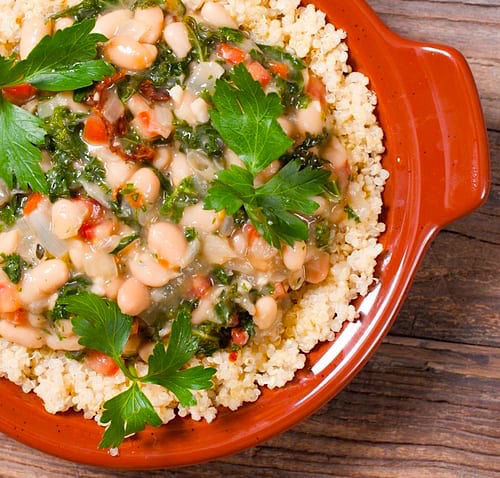 babaganoush ($9.50) has the
requisite smokiness in eggplant that has been
fire-roasted, blended with spices and garnished
with bright red pomegranate seeds that crunch in
the mouth, while the lovely, rosy mouhamara
($9.50) is a similarly smoky mash of red peppers,
toasted walnuts, olive oil, pomegranate and the
delightful addition of molasses. A
too-simple plate of roasted beets ($8), with more
molasses and pomegranate, was bland.
babaganoush ($9.50) has the
requisite smokiness in eggplant that has been
fire-roasted, blended with spices and garnished
with bright red pomegranate seeds that crunch in
the mouth, while the lovely, rosy mouhamara
($9.50) is a similarly smoky mash of red peppers,
toasted walnuts, olive oil, pomegranate and the
delightful addition of molasses. A
too-simple plate of roasted beets ($8), with more
molasses and pomegranate, was bland.
The pride of tradition about
flatbreads (below)
in the Middle East causes Tania to wince a little
if you call them pizzas, though the offering here
called “Ella" ($13), with ricotta,
caramelized onions, baby arugula, evoo, parmesan
and toasted pine nuts.
Since
every dish is meant to be shared, the main courses
are generously proportioned, like the Turkish
ragout of eggplant braised slowly with lentils,
Anaheim peppers, and that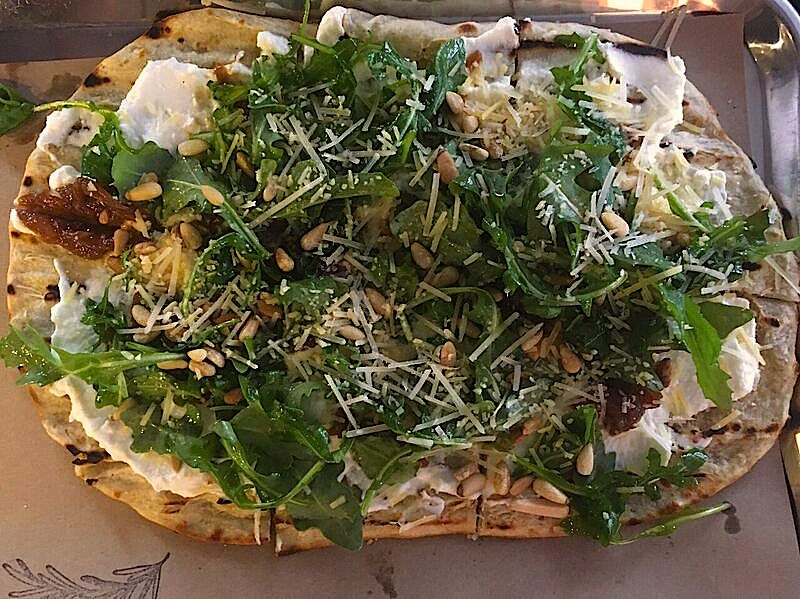 apparent
staple, pomegranate molasses, served atop tender
quinoa ($15).
A hearty Moroccan tagine
with chickpeas, zucchini, squash and savory spices
($16.5) gives off the evocative aroma of saffron,
while a very good five-mushroom lasagna ($22) that
incorporates mozzarella, ricotta, parmigiano and
Comté cheeses along with cremini and porcini mushrooms
in
a rich béchamel is one the best dishes on a menu
of stand-outs.
apparent
staple, pomegranate molasses, served atop tender
quinoa ($15).
A hearty Moroccan tagine
with chickpeas, zucchini, squash and savory spices
($16.5) gives off the evocative aroma of saffron,
while a very good five-mushroom lasagna ($22) that
incorporates mozzarella, ricotta, parmigiano and
Comté cheeses along with cremini and porcini mushrooms
in
a rich béchamel is one the best dishes on a menu
of stand-outs.
So, too, the
housemade truffled fettuccine ($20) is a
vegetarian triumph of grilled asparagus, sweet
corn, bitter radicchio and fresh basil with
truffle butter (below)—a
very colorful, lovely presentation of wholly
complementary flavors. The only disappointment was
falafel
($15), whose little cakes of chickpeas and favas
were dry, as, for some reason, they often are.
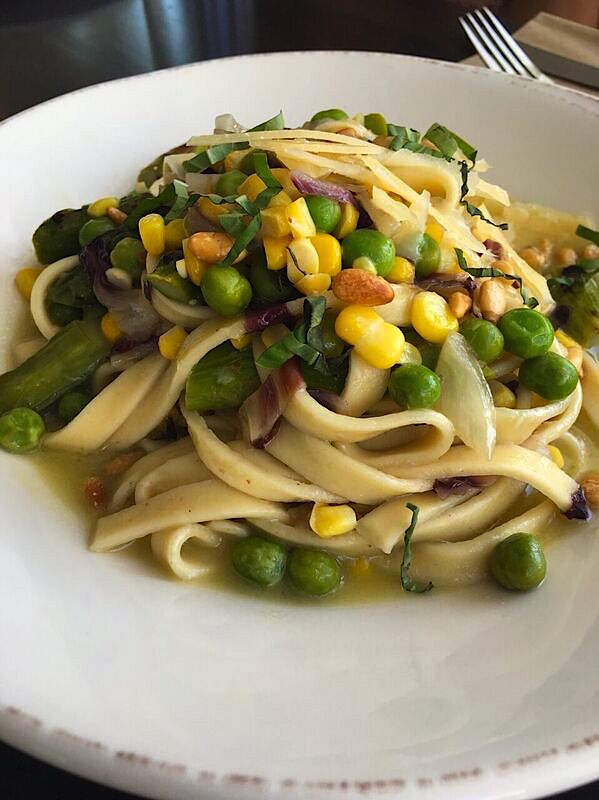 Of
course, they make the desserts here, and I
recommend the almond rice pudding ($5.50) made
with almond milk touched with cinnamon, or the
dark chocolate pudding that uses Valrhona
chocolate, coconut milk and toasted almonds.
Of
course, they make the desserts here, and I
recommend the almond rice pudding ($5.50) made
with almond milk touched with cinnamon, or the
dark chocolate pudding that uses Valrhona
chocolate, coconut milk and toasted almonds.
It is surprising to find
Mediterranean food of this caliber anywhere in the
U.S., and particularly in an affluent suburban
town like Rye on a street lined with boutiques, a
steak house, and an oyster bar. Indeed, much has
been made by the media this year of the superb
Mediterranean food at Shaya in New Orleans—an
opinion I wholeheartedly share—but in every way I
can think of Rosemary and Vine is as admirable,
even without meat on the menu. Everything
is fresh, in concept, in ideas, in careful
cooking, and in the way Tania and Berj, who live
in Rye, greet their guests.
ROSEMARY AND VINE
29 Purchase St, Rye, NY
914-481-8660
rosemaryandvine.com
Open for lunch and dinner Mon.-Sat.
By John Mariani
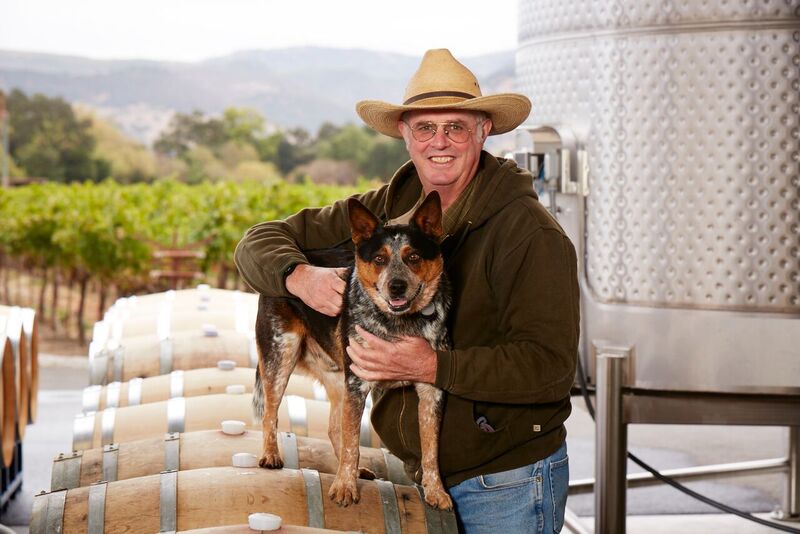
If you believed all the lyrical
lingo on wine labels, you’d think that owning
vineyards and making wine is some kind of
idyllic life of dreamers and the gods who love
them. In
fact, winemaking is a business, one guided as
much by the vagaries of the market as by
weather, and all the winsome blathering, best
satirized in Evelyn Waugh’s Brideshead
Revisited—“It is a little, shy wine like a
gazelle ... dappled, in a tapestry meadow ... a
necklace of pearls on a white neck”—cannot
change the fact that wine begins down in the
dirt and ends up being boxed and shipped out in
a truck.
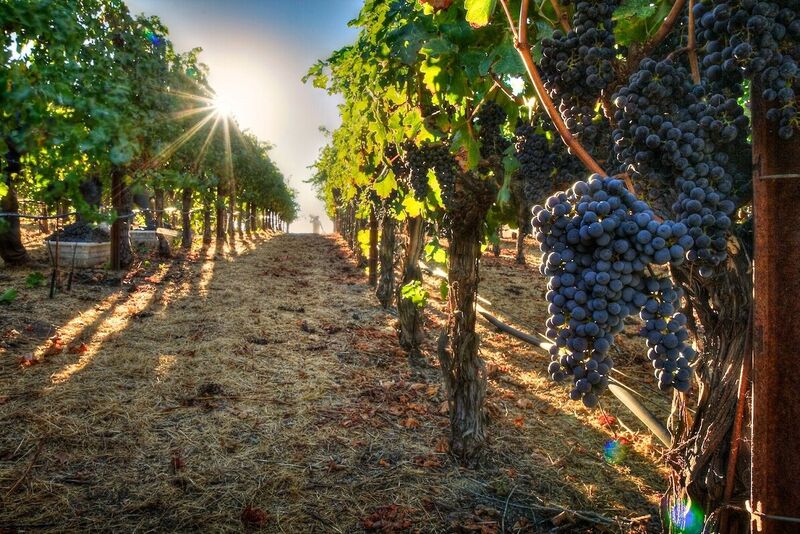 One of the least
prepossessing and therefore honest winery owners
I’ve met is
Tom Gamble (above)
of the Gamble Family Vineyards, whose name
suggests just how much risk there is in being a
small winery in California’s Napa Valley, whose
huge, well-invested wineries like Robert Mondavi
and Berenger have tremendous clout in buying land,
grapes and supermarket space.
One of the least
prepossessing and therefore honest winery owners
I’ve met is
Tom Gamble (above)
of the Gamble Family Vineyards, whose name
suggests just how much risk there is in being a
small winery in California’s Napa Valley, whose
huge, well-invested wineries like Robert Mondavi
and Berenger have tremendous clout in buying land,
grapes and supermarket space.
“It’s difficult to get
distribution,” Gamble, who has the easy, laid-back
California swagger down pat, said over dinner in
New York. “Thank God we have one thousand
subscribers who buy 40 percent of our wines, and
our biggest dollar gross is in selling our grapes
to other wineries.” (In fact, Beringer leases a
large chunk of Gamble’s properties.)
Gamble is a third-generation
farmer. Vineyard owners don’t often refer to
themselves as farmers, though Tom has some cattle
ranchers in his bloodline and, with 100 years of
agriculture in Napa behind him, now owns 175 acres
of prime estate vineyards from the most respected
AVAs—Oakville, Mt. Veeder, Rutherford and
Yountville, where grape-growing plots can sell for
hundreds of thousands of dollars per acre, with
few left to buy.
“That’s one of the great things about being
in this valley for a century,” he says. “You get
to know the microclimates and the growers 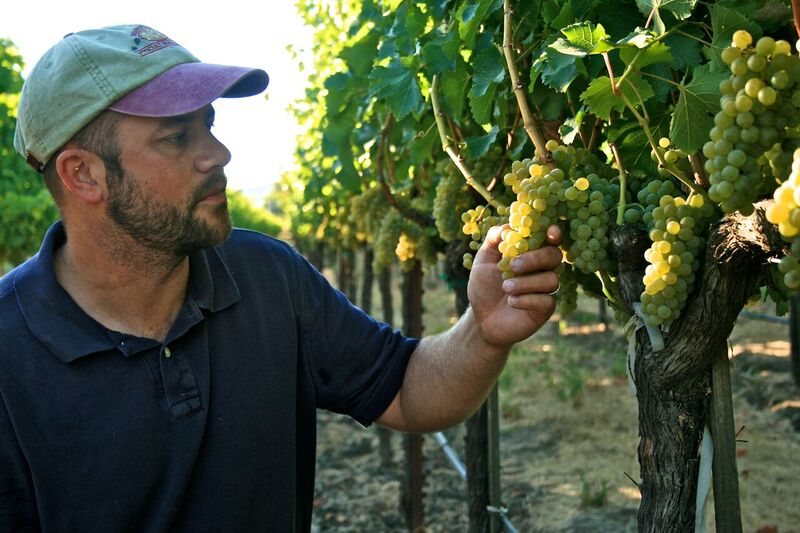 who always know of a
little section of prime terroir no one else ever
knew about.
who always know of a
little section of prime terroir no one else ever
knew about.
“Given this legacy, one does
not continue farming for dispassionate reasons
alone,” he says. “There are easier ways to make a
living. So, taking the next step and putting my
name on a bottle of wine does not come lightly. I
didn’t know much about winemaking or wine sales,
but I knew I had good land to work with.”
Gamble
Family Vineyards was flunded in 2005 and the
winery built in in 2012 on land that holds the
ancestral farmhouse, water tower, and barns, which
Gamble and his wife, Colette, whose family and
farmland have been in the valley since 1873, are
committed to maintaining. Her brother, Morgan
Conolly, did the design of the property’s new
structures, which includes a tasting room (by
invitation only).
Tom and Brit-born winemaker Jim Close (right) are,
as you’d expect, also insistent that they follow
sustainable agriculture; his winery and vineyards
are certified Napa Green and Fish Friendly. That’s
in his blood, too. Tom’s  mother, Mary Ann McGuire, was active
in establishing1968’s Napa Valley Agricultural
Preserve, an ordinance that protects vineyards and
wineries from commercial development and ensures
that the land is used strictly for agricultural
purposes.
mother, Mary Ann McGuire, was active
in establishing1968’s Napa Valley Agricultural
Preserve, an ordinance that protects vineyards and
wineries from commercial development and ensures
that the land is used strictly for agricultural
purposes.
Rather than follow the
blockbuster style of many Napa Valley colleagues,
Gamble and
Close hue more closely to the traditions of
Bordeaux winemaking, whereby blending varietals
and heeding the nuances of terroir produce
distinctive wines without high alcohol levels. In
addition, they use both French and California
grape clones they believe thrive best in one plot
or another. They also want their wines
to age gracefully and take their time to mature.
“We aim for vivacity, richness
and lift,” said Gamble. “If there’s too much
alcohol, or imbalance of tannin and acid, the wine
won’t marry with food.” When it came to marrying
Gamble’s Sauvignon Blanc with peppery focaccia
made at Lincoln
Ristorante that evening, the flavors were indeed
highly complementary. The pepper perked up the
taste of the wine and the wine imparted a tangy
sweetness to the warm, olive oil-brushed bread. Gamble
also makes a beautiful series of well-structured
Cabernet Sauvignons that echo some very fine
Bordeaux while still showing the effects of
California sun and soil.
The
naming of estates on Napa Valley wine labels is
often a mixture of mysterious numbers and letters,
but Gamble prefers them to have personal meaning
tied to his family, so it’s no surprise to find
names like “Homestead” and “Water Tower” referring
to blocks.
Two wines are named after his parents, G. Thomas
and MaryAnn. It is, then, a little
odd to find a vineyard named “Cairo,” which has no
seeming relevance to Napa Valley.
“Oh,” said Gamble, “That’s
named for our beloved rescue dog. He’s gone but he
lives on on the label.”
I should have guessed. Spoken
more like a farmer than a vintner.
❖❖❖
 OH, YEAH? WHAT
ABOUT CHIQUITA BANANA?
OH, YEAH? WHAT
ABOUT CHIQUITA BANANA?
50 SHADES OF BAD FOOD WRITING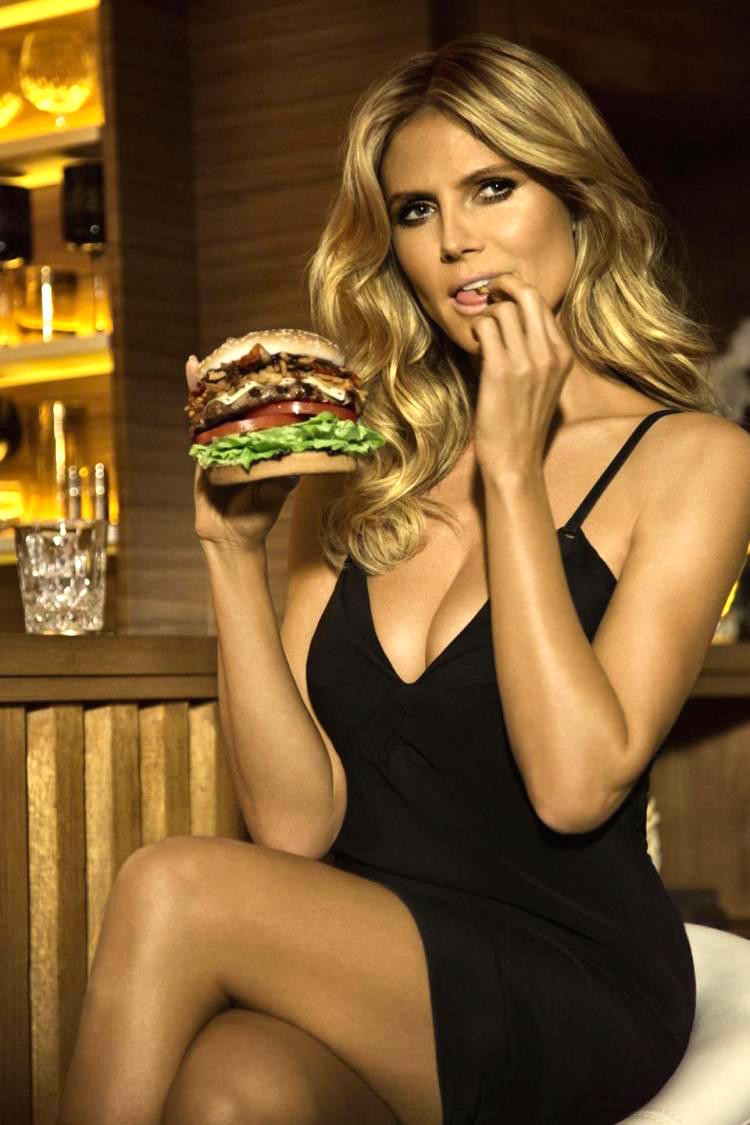
“My first suitor was hot, rich, smooth,
well-dressed, and arrive promptly. We met at ZBGV on
Race Street with my potential love match came gliding
out of the kitchen on a wooden board I couldn't help but
be charmed by the gently yielding homemade bun the slice
of melt the Emmenthaler curling around its edges, the
patty so rich it sparkled under the hot lights. It led
to one of those magical tasty first dates where I
thought I might have finally found `The One.’”—Jeff
Mathews, “Meat Market,” Cincinnati Magazine
(June 2016).
Any of John Mariani's books below may be ordered from amazon.com.
 The
Hound in Heaven (21st Century Lion Books)
is a novella, and for anyone who loves dogs,
Christmas, romance, inspiration, even the supernatural, I
hope you'll find this to be a treasured favorite.
The story concerns how, after a New England teacher,
his wife and their two daughters adopt a stray puppy found
in their barn in northern Maine, their lives seem full of
promise. But when tragedy strikes, their wonderful dog
Lazarus and the spirit of Christmas are the only things
that may bring his master back from the edge of
despair.
The
Hound in Heaven (21st Century Lion Books)
is a novella, and for anyone who loves dogs,
Christmas, romance, inspiration, even the supernatural, I
hope you'll find this to be a treasured favorite.
The story concerns how, after a New England teacher,
his wife and their two daughters adopt a stray puppy found
in their barn in northern Maine, their lives seem full of
promise. But when tragedy strikes, their wonderful dog
Lazarus and the spirit of Christmas are the only things
that may bring his master back from the edge of
despair. WATCH THE VIDEO!
“What a huge surprise turn this story took! I was completely stunned! I truly enjoyed this book and its message.” – Actress Ali MacGraw
“He had me at Page One. The amount of heart, human insight, soul searching, and deft literary strength that John Mariani pours into this airtight novella is vertigo-inducing. Perhaps ‘wow’ would be the best comment.” – James Dalessandro, author of Bohemian Heart and 1906.
“John Mariani’s Hound in Heaven starts with a well-painted portrayal of an American family, along with the requisite dog. A surprise event flips the action of the novel and captures us for a voyage leading to a hopeful and heart-warming message. A page turning, one sitting read, it’s the perfect antidote for the winter and promotion of holiday celebration.” – Ann Pearlman, author of The Christmas Cookie Club and A Gift for my Sister.
“John Mariani’s concise, achingly beautiful novella pulls a literary rabbit out of a hat – a mash-up of the cosmic and the intimate, the tragic and the heart-warming – a Christmas tale for all ages, and all faiths. Read it to your children, read it to yourself… but read it. Early and often. Highly recommended.” – Jay Bonansinga, New York Times bestselling author of Pinkerton’s War, The Sinking of The Eastland, and The Walking Dead: The Road To Woodbury.
“Amazing things happen when you open your heart to an animal. The Hound in Heaven delivers a powerful story of healing that is forged in the spiritual relationship between a man and his best friend. The book brings a message of hope that can enrich our images of family, love, and loss.” – Dr. Barbara Royal, author of The Royal Treatment.
 |
The Encyclopedia of American Food and Drink by John F. Mariani (Bloomsbury USA, $35) Modesty forbids me to praise my own new book, but let me proudly say that it is an extensive revision of the 4th edition that appeared more than a decade ago, before locavores, molecular cuisine, modernist cuisine, the Food Network and so much more, now included. Word origins have been completely updated, as have per capita consumption and production stats. Most important, for the first time since publication in the 1980s, the book includes more than 100 biographies of Americans who have changed the way we cook, eat and drink -- from Fannie Farmer and Julia Child to Robert Mondavi and Thomas Keller. "This book is amazing! It has entries for everything from `abalone' to `zwieback,' plus more than 500 recipes for classic American dishes and drinks."--Devra First, The Boston Globe. "Much needed in any kitchen library."--Bon Appetit. |
"Eating Italian will never be the same after reading John Mariani's entertaining and savory gastronomical history of the cuisine of Italy and how it won over appetites worldwide. . . . This book is such a tasteful narrative that it will literally make you hungry for Italian food and arouse your appetite for gastronomical history."--Don Oldenburg, USA Today. "Italian
restaurants--some good, some glitzy--far
outnumber their French rivals. Many of
these establishments are zestfully described
in How Italian Food Conquered the World, an
entertaining and fact-filled chronicle by
food-and-wine correspondent John F.
Mariani."--Aram Bakshian Jr., Wall Street
Journal.
"Equal parts
history, sociology, gastronomy, and just
plain fun, How Italian Food Conquered the
World tells the captivating and delicious
story of the (let's face it) everybody's
favorite cuisine with clarity, verve and
more than one surprise."--Colman Andrews,
editorial director of The Daily
Meal.com. "A fantastic and fascinating
read, covering everything from the influence
of Venice's spice trade to the impact of
Italian immigrants in America and the
evolution of alta cucina. This book will
serve as a terrific resource to anyone
interested in the real story of Italian
food."--Mary Ann Esposito, host of PBS-TV's
Ciao
Italia. "John Mariani has written the
definitive history of how Italians won their
way into our hearts, minds, and
stomachs. It's a story of pleasure over
pomp and taste over technique."--Danny Meyer,
owner of NYC restaurants Union Square
Cafe, The Modern, and Maialino.
|
 |
 |
 |
 |
 |
 |
 |
 |
 Everett Potter's Travel Report:
Everett Potter's Travel Report: 
 Eating Las
Vegas JOHN CURTAS has been covering
the Las Vegas food and restaurant scene
since 1995. He is the co-author of EATING LAS
VEGAS – The 50 Essential Restaurants (the
fourth edition of which will be published in
early 2016), as well as the author of the Eating Las
Vegas web site: www.eatinglasvegas.
He can also be seen every Friday morning as
the “resident foodie” for Wake Up With the
Wagners on KSNV TV (NBC) Channel 3 in
Las Vegas.
Eating Las
Vegas JOHN CURTAS has been covering
the Las Vegas food and restaurant scene
since 1995. He is the co-author of EATING LAS
VEGAS – The 50 Essential Restaurants (the
fourth edition of which will be published in
early 2016), as well as the author of the Eating Las
Vegas web site: www.eatinglasvegas.
He can also be seen every Friday morning as
the “resident foodie” for Wake Up With the
Wagners on KSNV TV (NBC) Channel 3 in
Las Vegas.

MARIANI'S VIRTUAL GOURMET
NEWSLETTER is published weekly. Editor/Publisher: John
Mariani.
Editor: Walter Bagley. Contributing Writers: Christopher Mariani,
Robert Mariani, Misha
Mariani,
John A. Curtas, Edward Brivio, Mort Hochstein,
Andrew Chalk, Dotty Griffith and Brian Freedman. Contributing
Photographers: Galina Dargery, Bobby
Pirillo. Technical Advisor: Gerry McLoughlin.
To un-subscribe from this newsletter,click here.
© copyright John Mariani 2016

